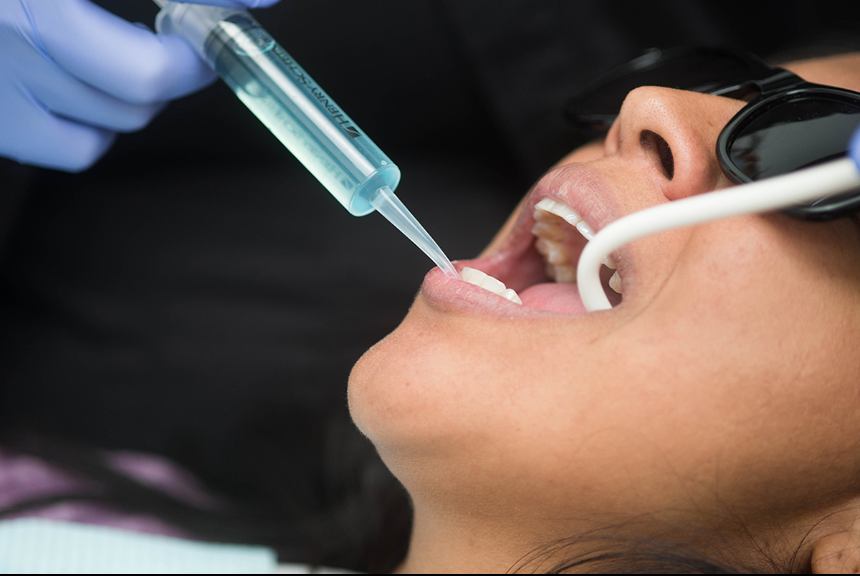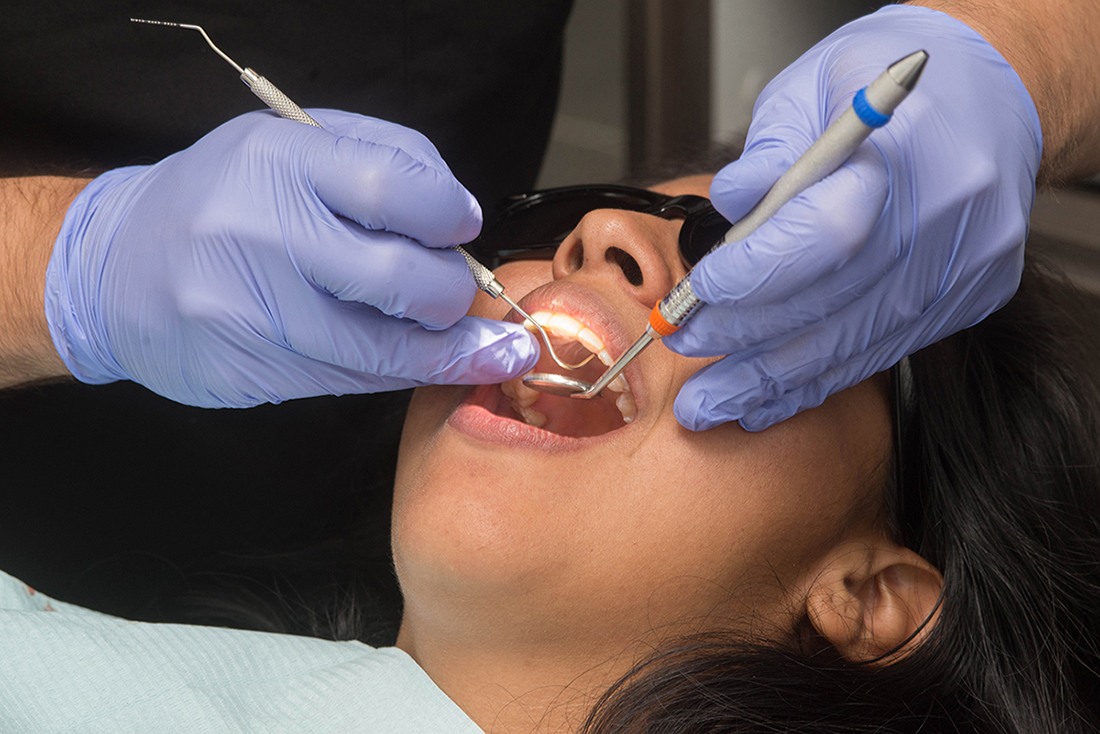Many people don’t like going to the dentist. In fact, around 36% of people are anxious about visiting the dentist, while 12% suffer from extreme dental fear. If you’re someone wary of visiting the dentist, your anxiety could be worsened by having multiple people pop in and out of the treatment room to carry out tasks while you’re receiving treatment.
If you’re having a simple procedure, you might wonder why you’re not just being treated by the dentist alone. After all, how difficult is it to fill a cavity? But there’s a lot of important work that goes on behind closed doors you might not know about.
As well as the dentist, a strong dental team needs a dental hygienist and dental assistant to properly function. Without a full team, every trip to the dentist would be considerably longer and more stressful for you. It might even be more painful for your mouth and your wallet, too.
Each member of staff is essential to building a streamlined team to help take care of your oral health. So you can better understand, here are some of the most common dental practice employees and a look at what they each do.
Dental assistant
A dental assistant (also known as an RDA: Registered Dental Assistant) makes your visit to the dentist much more efficient. Without an RDA, you’d spend a lot more time in the waiting room and dentist chair than necessary.
The dental assistant is usually the first member of staff you’ll come into contact with when you enter the practice. Although they won’t do much work directly with you, they’ll settle you in and prepare the main procedure room so the dental hygienist and dentist have everything they need to do their jobs.
The primary duties an assistant carries out are:
- Asking about your medical history.
- Taking your blood pressure and pulse.
- Taking and developing x-rays.
- Sterilizing instruments and equipment.
- Helping you feel relaxed before, during and after your treatment.
It’s common for dental practices to work with several temporary dental assistants, instead of one full-time dental assistant. This is because dental assisting is a very hands-on job and can be physically stressful and painful when taken on by a single person.
To help spread out the workload and provide top care for patients, dental practice owners will usually hire several RDAs to work a few shifts each week. This means it’s quite common to see different dental assistants each time you visit the dentist.
Dental hygienist
A dental hygienist (or an RDH: Registered Dental Hygienist) is more involved with you. An RDH helps free up the dentist to do more complex work by taking care of the smaller, lesser complicated dental procedures.
The dental hygienist is usually the person you’ll spend most time with if you visit the dentist for a simple teeth cleaning or filling. If the dentist takes over to do a more elaborate procedure, the RDH will remain in the room to assist the dentist.
The main responsibilities of a dental hygienist are:
- Cleaning your teeth to remove plaque.
- Applying sealants and fluoride.
- Screening for oral health conditions.
- Making impressions of your teeth to create casts.
- Giving advice on how to maintain your oral health at home.
Just like dental practices employ several part-time dental assistants, they also employ multiple dental hygienists to work several shifts per week.
The reason is the same — dental hygiene can be very physically stressful and it makes sense to split the responsibilities up between a number of different people. Again, this means you’re unlikely to see the same RDH every time you visit.
Dentist
The dentist is the most qualified person in the dental practice. They’re doctors who specialize in taking care of much more than just your teeth and your gums. They’re also responsible for looking after the muscles in your jaw, neck and head, your tongue and salivary glands.
A dentist is in charge of:
- Performing surgical procedures on your teeth, gums and bones.
- Diagnosing oral diseases.
- Interpreting x-rays and diagnostic tests.
- Putting together treatment plans.
- Making sure anesthetic is safely administered.
Whether you visit a small, medium or large dental practice, you’ll almost always see the same dentist. The only reason you’ll see a different dentist is usually because your regular dentist is off sick or on vacation. When this happens, the dental practice owner will hire a temporary dentist to fill in the gap until the regular dentist returns.
Specialist dentist
A specialist dentist is a dentist who focuses on a specific aspect of dentistry, such as root canals, tooth extractions or braces. They spend several additional years in dentistry school studying their specialist subject. Small dental practices will rarely employ a specialist dentist. If they do, it’s often because the specialist dentist is the practice owner.
Even larger dental practices tend to only employ 1-2 specialist dentists. If you need to see a specialist for some dental treatment, most practices will refer you to a specialist in the required field. However, dental practices that provide a first-class service to their patients will often hire a temporary dental specialist solely to carry out your treatment.
For example, if you need a root canal treatment and the general dentist is uncomfortable carrying it out, the practice owner will hire an endodontist (a dentist that specializes in root canals) for a few hours to cover the procedure. This way you can receive all your treatment in the single dental practice you’re used to visiting.
Too many cooks don’t spoil the broth
Having a dental assistant, dental hygienist and dentist in one small room might seem a bit intimidating, especially if you’re already anxious about visiting the dentist. But they’re all essential to provide you with an excellent service and help you maintain your oral wellbeing.





